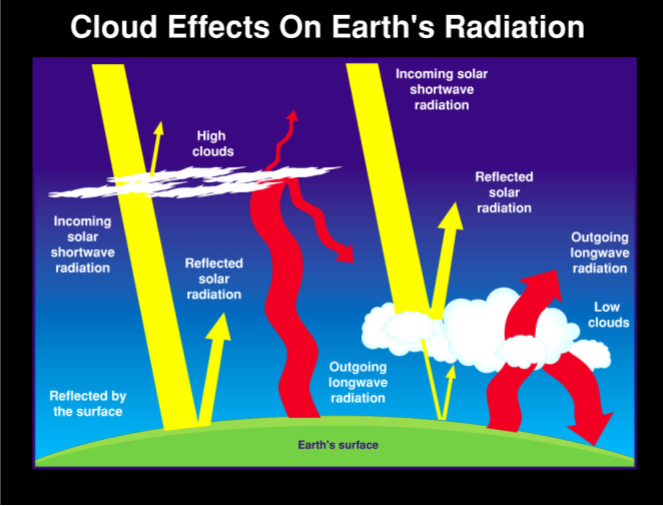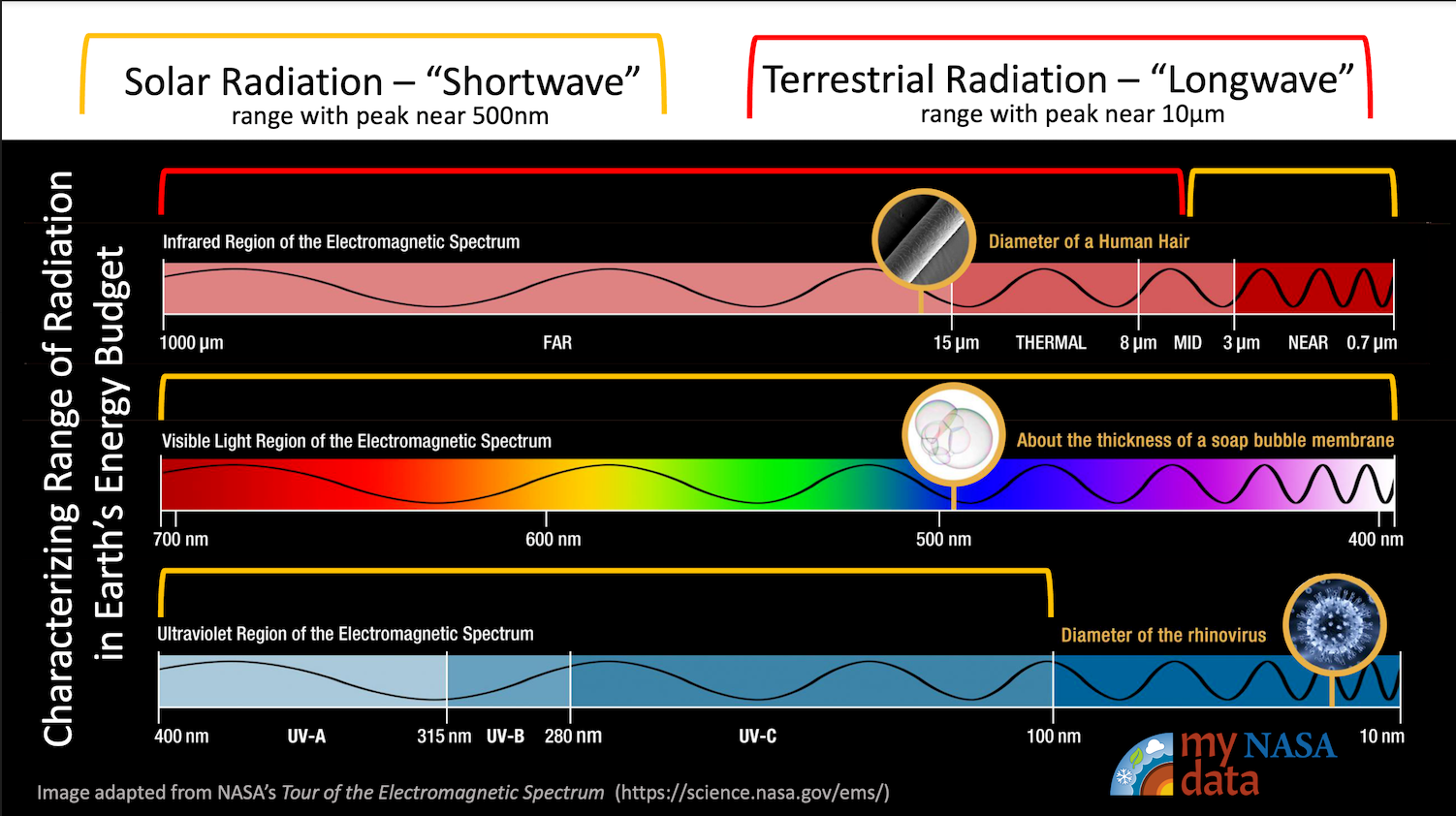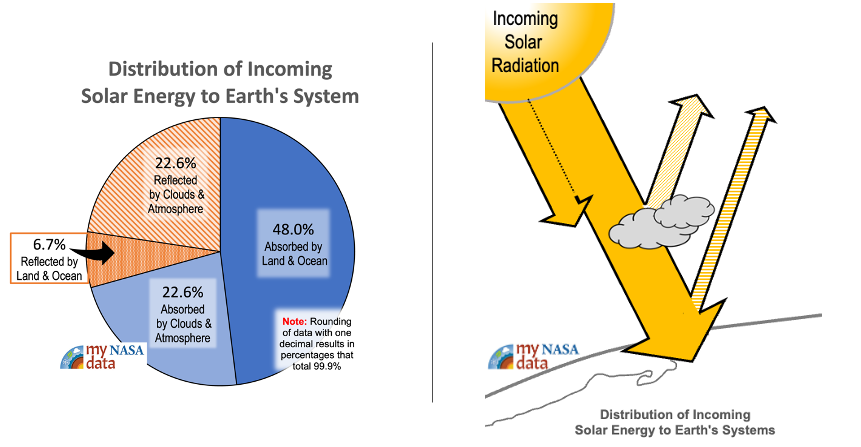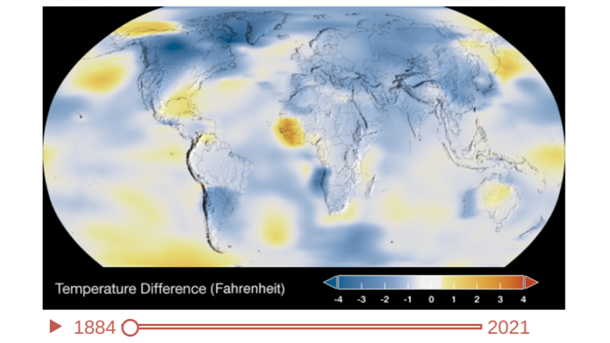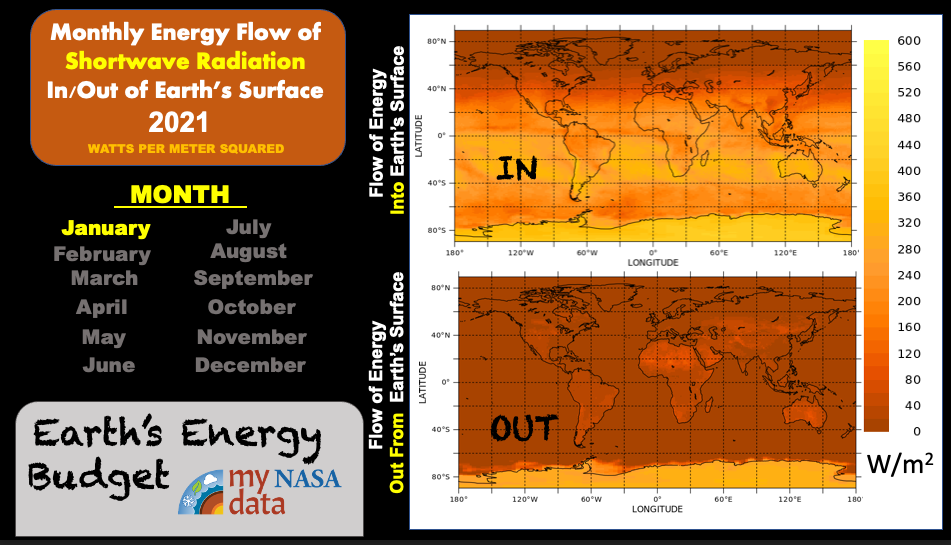Interactive Models
Earth's Energy Budget StoryMap
Overview
In this StoryMap students will learn about the different components of the Earth's Energy Budget, where in the Earth System energy is being absorbed and reflected, and how features of the Earth such as clouds, aerosols, and greenhouse gases, can cause variations in the flow of energy into and out of Earth Systems. In the final section, students make a claim as to why the Earth's Energy Budget is currently out of balance and provide evidence to support their reasoning.
This StoryMap is intended to be used with students who have access to the internet in a 1:1 or 1:2 setting.
Materials Required
Resources Needed Per Student:
- Student Data Sheet or Student Data Forms
- Computer/Tablet
- Internet Access
- Link to the Earth's Energy Budget StoryMap
Directions
- Using an internet accessible device, students open the link to the Earth's Energy Budget StoryMap to begin their exploration of this phenomenon.
- Distribute the Earth's Energy Budget StoryMap Student Sheet. Have students navigate on their own through the Engage, Explore, Explain, Elaborate, and Evaluate tabs of the StoryMap to answer the questions and complete the activities on their student sheet.
Teacher Note
Earth strives to maintain a balance between the overall amount of incoming and outgoing energy at the top of the atmosphere. This is called Earth’s energy budget or Earth's radiation budget. Earth receives incoming energy from the Sun. Earth also emits energy back to space. For Earth’s temperature to be stable over long periods of time (for the energy budget to be in balance), the amount of incoming energy and outgoing energy must be equal. If incoming energy is more than outgoing energy, Earth will warm. If outgoing energy is greater than incoming energy, Earth will cool.
To learn more, visit:
- The Earth's Energy Budget Phenomena page for background information.
Teachers who are interested in receiving the answer key, please complete the Teacher Key Request and Verification Form. We verify that requestors are teachers prior to sending access to the answer keys as we’ve had many students try to pass as teachers to gain access.
Disciplinary Core Ideas:
- ESS2A: Earth Materials and Systems
- ESS3C: Human Impacts on Earth Systems
Crosscutting Concepts:
- Systems and System Models
- Stability and Change
Science and Engineering Practices:
- Developing and Using Models
- Analyzing and Interpreting Data
- Students will identify and describe the different components and flows of energy of the Earth's Energy Budget diagram.
- Students will observe the effects of albedo, clouds, aerosols, and greenhouse gases on Earth's Energy Budget.
- Students will differentiate between reflection and absorption.
- Students will use evidence to describe how imbalances occur in Earth's Energy Budget.
- Which parts of the Earth System impact the flow of energy into and out of the Earth System?
- How do clouds, aerosols, and greenhouse gases cause variations in the flow of energy into and out of the Earth System?
- What is albedo, and how does it impact Earth's Energy Budget?
- Why is Earth's Energy Budget out of balance?
National Geography Standards:
- How to use maps and other geographic representations, tools, and technologies to acquire, process, and report information from a spatial perspective.
- Internet Required
- One-to-One (tablet, laptop, or CPU)


